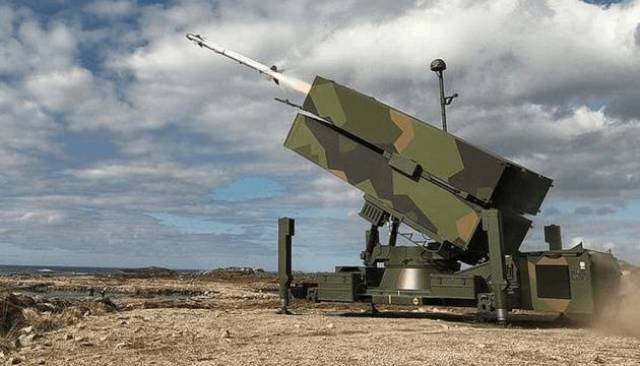We tell you about the features of the anti-aircraft missile systems transferred by the West to UkraineThe United States of America handed over to Ukraine the first two NASAMS anti-aircraft missile systems (SAMs).
This statement was made by the CEO of NASAMS manufacturer, the American company Raytheon Technologies, Greg Hayes in an interview with CNBC. In total, the United States intends to send eight such systems to Ukraine.
TASS assessed the impact of another Western weapons system transferred to Kiev on the course of a special military operation of the Armed Forces of the Russian Federation, and also compared NASAMS with modern Russian air defense systems.
NASAMS Features
NASAMS (National Advanced Surface-to-Air Missile System — an advanced national system with surface—to-air missiles) of small and medium range was jointly developed by the Norwegian company Kongsberg Defense & Aerospace and the American Raytheon. The complex is based on air—to—air missiles adapted for launching from a ground installation.
The development of the complex began in the 1990s, since then NASAMS has been upgraded several times. Officials did not comment on the NASAMS variant delivered to Ukraine. A number of media outlets have suggested that this is NASAMS II, which began to be developed since the 2000s.
According to open sources, NASAMS II is a modular distributed system that can combine up to 12 launchers with 6 combat—ready missiles on each, up to 8 AN/MPQ-64F1 radar stations, a mobile command post and a vehicle with an electron-optical target search and tracking system. The radar has an instrumental target detection range of 120 km, and its relatively light weight (1.8 tons) and small dimensions allow it to be placed on an army SUV. The number of simultaneously fired targets is up to 72. Another radar compatible with the supported information transmission protocols can also be attached to the complex.
NASAMS uses the AMRAAM AIM—120 guided air-to-air missile, developed by the American concern Raytheon together with Hughes (later became part of Raytheon). The on-board AMRAAM control system consists of an autopilot with a radio command course correction, as well as an active radar homing head (ARGSN), which turns on at the end of the trajectory, while the target is hit in the "shot and forgot" mode. The manufacturer claims that the modern control system "allows the rocket to quickly find targets in the most difficult conditions," and states that over 30 years of operation, this rocket participated in combat operations and made almost 5 thousand test launches.
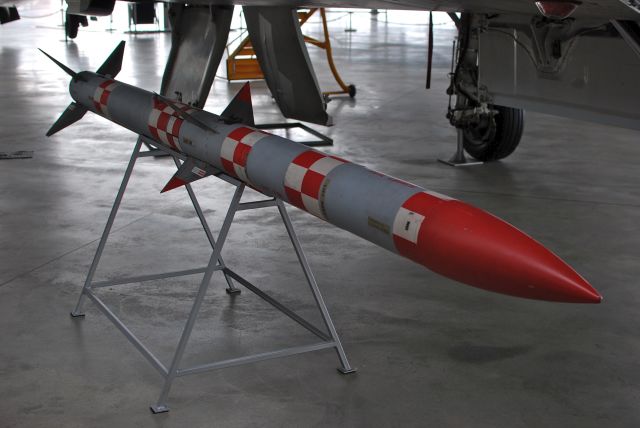 |
| AMRAAM AIM-120 guided air—to-air missile. |
| Source: Vestman from Helsinki/ CC BY 2.0/ Wikimedia Commons |
The complex design of AMRAAM has affected its cost: according to an analysis conducted by the military editorial office of the American online publication The Drive, the purchase price of one missile of this type for the US Armed Forces was about $ 1 million in fiscal year 2021.
The rocket's performance deteriorates significantly when launched from a ground-based launcher: according to open data, the AIM-120 launched from an aircraft carrier will destroy a target at a distance of 120 km, and when launched from the ground — at a range of about 30 km and at an altitude of 15 km.
The AMRAAM-ER (Extended Range — "extended range") missile has been developed specifically for NASAMS of the third generation, which allows intercepting targets at a greater distance and altitude "due to a more powerful engine and improved control algorithms." The new missile is incompatible with the launchers of the previous series.
Russian analogues
As in the case of the IRIS-T SLM medium-range anti-aircraft missile system, which Germany "presented" to Ukraine in October, the "classmates" of NASAMS are Russian Buk family air defense systems.
"If we are talking about the Buk-M3, then maybe they are the same in some characteristics [with NASAMS], but the Buk-M3 already has proven combat work. NASAMS has no such proven combat work yet. Therefore, comparing them one—on—one is not quite right, they need to be compared in the picture of a combined-arms battle," Alexey Leonkov, editor of the Arsenal of the Fatherland, commented to TASS, adding that in conjunction with the Tor short-range air defense system, the complex proved its ability to repel massive simultaneous attacks of aviation systems, operational and tactical missiles and multiple launch rocket systems aimed at depleting the arsenal of anti-aircraft missiles.
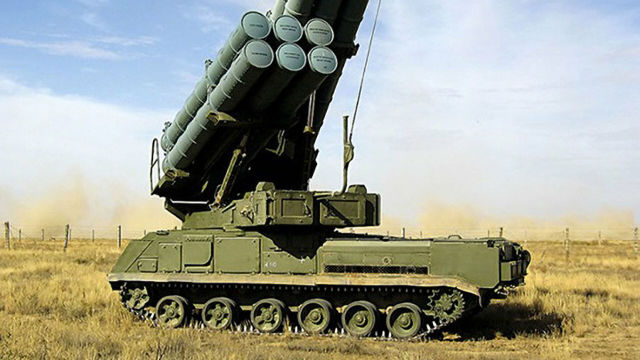 |
| Buk-M3 self-propelled unit. |
| Source: CC BY 4.0 / Russian Ministry of Defense / |
The head of the Bureau of Military-Political Analysis, Alexander Mikhailov, reminded TASS that the latest Russian S-350 Vityaz system surpasses NASAMS in height and range. In addition, this SAM, like the Buk-M3, is much more mobile than the American one. "They arrive at their destination, shoot back and immediately leave the place. This makes it impossible to hit them after the defeat of air environments," Mikhailov said.
At the beginning of 2022, the anti-aircraft missile regiment of the 4th Army of the Air Force and Air Defense of the Southern Military District became the first in the country to begin rearmament with the latest mobile S-350 Vityaz short- and medium-range anti-aircraft missile system. The novelty of the development of the concern of East Kazakhstan Region Almaz-Antey carries 12 anti-aircraft missiles on one launcher, surpassing similar systems in this parameter, and is characterized by increased noise immunity of the radar complex. The S-350 is interfaced with all air defense systems, can receive information from other complexes and systems, working as a second echelon in conjunction with the S-400 air defense system, increasing the density of anti-aircraft fire. Depending on the type of missiles used, the S-350 is capable of hitting targets at a distance of up to 120 km and an altitude of up to 25 km.
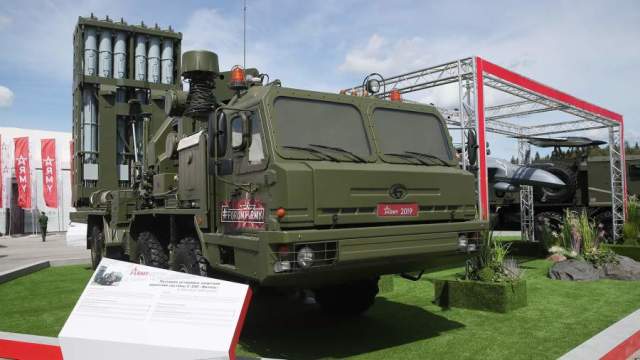 |
| ZRS S-350 "Vityaz". |
| Source: Photo: IZVESTIA/Alexey Maishev |
"The system turned out to be good, compact, it performs all functions with a serious overlap of the combat capabilities of its predecessors. The fundamental difference between the Vityaz and all other complexes of this class is the ability to quickly aim missiles and survey space. This system is capable of effectively hitting not only existing means of air attack, but also promising ones," concern CEO Jan Novikov said in an interview with National Defense magazine.
What to expect from NASAMS in Ukraine
Experts are skeptical about the appearance of another foreign air defense system in the Ukrainian military.
Mikhailov believes that two NASAMS complexes will not allow Ukraine to protect the entire front line, they will be able to control only a section or a small number of military facilities. "Either take, for example, several Ukrainian cities under control, where defense industry enterprises are concentrated, or military facilities," he said.
"I think their main task is to cover some vital objects that are being attacked by Geran—2 drones," Leonkov confirmed.
The delivered NASAMS will not be able to protect even a section of the front, according to TASS military observer Viktor Litovkin. "This is a drop in the ocean. <...> Two launchers can cover only one HIMARS battery. These SAMs do not work according to our "Calibers", "Iskanders", I'm not talking about the Dagger missiles," he said.
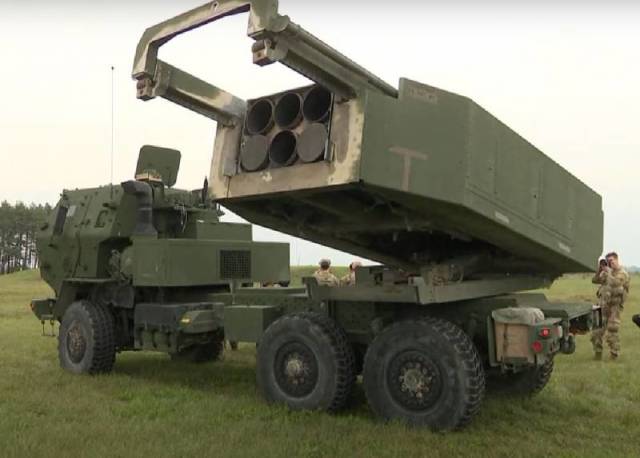 |
| Source: topwar.ru |
Mikhailov is also sure that the main purpose of NASAMS is to protect military facilities from attacks by kamikaze drones, the intensity of the use of which by Russian troops has increased recently. The expert drew attention to the high cost of AMRAAM-type missiles, which makes their use to intercept inexpensive mass drones impractical. "Classic AMRAAM-type missiles cost more than $1 million. It should be understood that the objects on which they will work must have an appropriate cost," Mikhailov recalled. "We must understand that without a large number of anti-aircraft guided missiles, NASAMS will be useless. And you can work out a small set quickly. Complexes will cease to be useful," he believes.
A similar opinion is shared by Vijander Thakur, an expert of the EurAsian Times, a former pilot of the Indian Air Force. "In a sense, the sale of NASAMS is a trap from the USA. The system is very interesting, but expensive. As soon as Ukraine invests in it, it will have to constantly increase investments in order to secure more and more assets," he writes in an analytical article. The expert draws attention to the fact that NASAMS is a short—range system, which means that a significant number of SAMs will be required to cover numerous infrastructure facilities in Ukraine. "Most likely, NASAMS is deployed to protect the Ukrainian leadership and significant command and control centers, and not infrastructure facilities," Takur opines.
Leonkov believes that the deployment of the next Western air defense system in Ukraine should be considered as testing novelties in real combat conditions. "The Americans now have to decide which systems will be included in the future air defense-missile defense system, and I think that Ukraine is an ideal testing ground for this," he concluded, noting that this is why the small number of air defense systems supplied to the country is connected.
Mikhailov believes that the United States allocates military funds in a dosed manner, not rushing to supply more powerful Patriot-type complexes, since they understand that Russian troops will still find a way to destroy them, which will cast a shadow on the reputation of the American defense industrial complex. Therefore, Western countries are sending complexes to Ukraine that, on the one hand, are modern, but, on the other, cannot make drastic changes in the course of military operations.
"The Americans also understand that Russia is not yet using its full set of offensive weapons, which it could use if it were not about Ukraine, but a state far from us politically and socially. Therefore, realizing this, they are encouraging Ukrainians, but they themselves understand at the internal level that Ukraine will not win this war," Mikhailov concluded.
Victor Bodrov
